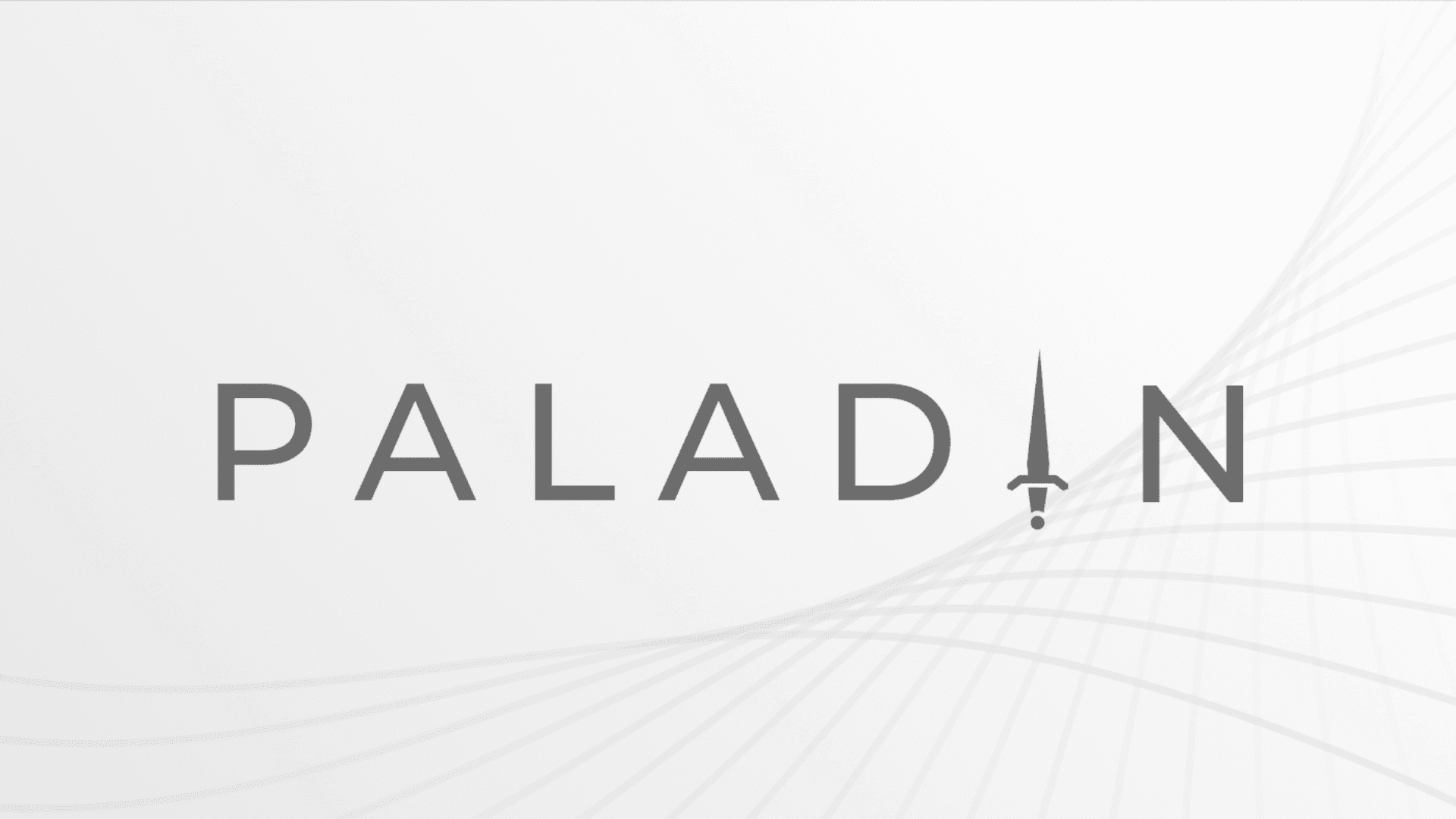Paladin | Solana Validator Client for Jito fork
Duration
In Progress
Task
Supported Chains
Category
Paladin | Solana Validator Client for Jito fork

Table of Contents
What is Paladin?
- An open-source Solana validator client developed by forking Jito.
- Allows validators to directly capture "MEV (arbitrage) that does not cause losses to users," reducing fees paid to external searchers.
- Simultaneously provides a mechanism to deter malicious activities such as front-running while redistributing rewards through the PAL token.
Two Main Components
- Paladin Bot
- An open-source Arb (arbitrage) bot that runs on the Jito client.
- Allows validators themselves to directly capture good MEV (such as arbitrage that does not involve user losses), reducing fee leakage due to outsourcing to auctions (paying fees to third-party searchers).
- In principle, eliminates malicious transactions such as sandwich attacks using bundles, achieving both user protection and high APY for validators.
- PAL Token
- Designed to distribute a portion of the captured MEV to token holders, with the majority going to validators and SOL stakers.
- Validators and stakers are airdropped a large amount of PAL, which acts as collateral to deter malicious behavior.
- Staked PAL of validators judged to be "cheating" by the majority will be slashed. This is designed so that the risk of losing collateral (PAL) is far greater than the short-term front-running profit.
Features
1.Incentive Design to Prevent Front-Running
- Redistributes a portion of MEV by returning 10% of MEV revenue to the PAL token, distributing half (5%) to Staked PAL holders and the other half (5%) to all PAL holders (including Staked/Unstaked).
2.Open-Source Approach - The Paladin bot is provided as 100% open-source, decentralized, and permissionless.
- Since validators launch it in their local environment and can execute arbitrage quickly without going through external competitive searchers, it is highly likely that the fee rate can be lower than existing auction-based models.
3.High Customizability - Validators can configure the "types of tokens and protocols to handle" according to their regulatory risks and tolerance.
- They can freely adjust to local regulations, such as limiting to safe tokens like USDC and SOL, or targeting all tokens.
4.Introduction of Priority Port (P3) - In addition to conventional Arb bot functions, a port is set up to send transactions directly to the leader for users who pay high priority fees.
- This allows transactions to be executed immediately and safely, and validators can earn higher priority fees.
- By token-gating this P3 (a mechanism to obtain usage slots by locking a certain amount of PAL), it increases the utility of PAL and further boosts the token value.
5.Slashing Function - If the majority of Staked PAL holders agree, the Staked PAL of validators who have committed fraud can be burned.
- This is also a mechanism to prevent betrayal and collusion between validators, and it dramatically increases the risk of committing malicious acts.
Advantages and Disadvantages
Advantages
1.Increased Validator Revenue
┗Reduces fees paid to external searchers (auction fees) and allows validators to directly collect MEV themselves, leading to expected APY improvement.
2. Front-Running (Sandwich Attack) Prevention
┗The bot eliminates malicious sandwich attacks and further suppresses the incentive for fraud by using a large amount of PAL as collateral.
3. Rewards for Token Holders
┗5% of MEV is distributed to Staked PAL and another 5% to all PAL holders, increasing the incentive for long-term token holding.
4. Fast and Secure Transactions through Priority Port (P3)
┗Guarantees immediate execution + front-running resistance for senders and provides an additional source of revenue for validators through priority fees.
Disadvantages
- Operational Risk of Slashing
┗Since slashing is done by majority vote, there is a non-zero risk of slashing due to inaccurate information or misunderstandings. There is also a possibility that the consensus-building flow may take time. - Dependence on PAL Price and Collateral Value
┗If the value of PAL falls, the deterrent effect of the collateral weakens, so it is essential to maintain the token value. - Influence of Large Stakeholders
┗It is important to note that validators and stakers who stake large amounts of SOL and hold large amounts of PAL have strong influence in slash votes. - Complexity of Implementation and Operation
┗There are technical hurdles and operational costs associated with bot management, updates, and consensus building for slashing.
Token and Airdrop Details
1.Total Supply and Airdrop
Total supply: 1 billion (1,000,000,000) PAL.
Airdrop Timing: Designed to allocate 100% of this 1 billion at once at the launch of the protocol.
The breakdown of the airdrop is as follows:
- 50% → Validators and SOL Stakers
┗Airdropped as Staked PAL according to the amount of SOL staked by the validator (including delegated SOL).
┗Stakers themselves will also receive Staked PAL proportional to their stake amount. - 23% → Solana Builders and Partners
┗Allocated to teams and individuals contributing to development and protocol operation on Solana.
┗The specific allocation to each project/team is expected to be revealed at launch, with the Paladin developers setting the general framework. - 20% → Paladin Development Team
┗The portion received by the team that invested and contributed to the design and development of Paladin (so-called core developers, etc.).
┗It is said that the team allocation rate is relatively low compared to other projects such as Jito (announced by the development team). - 7% → Evergreen Dev Fund
┗This is also allocated as Staked PAL and is locked so that it cannot be easily sold or transferred.
┗If there is agreement from the majority (Staked PAL holders), it may be used to fund various projects and research.
- MEV Distribution and Reward Structure
┗Captured MEV is distributed to 90% validators (current leader), 5% Staked PAL, and 5% all PAL holders.
┗Staked PAL receives an additional 5%, so rewards are higher than non-staked PAL.
┗Staked PAL has a cool-down design where a maximum of 5% can be unstaked per month. - Slashing and Governance
┗Slash voting is established if a majority agreement of Staked PAL continues for one week.
┗Governance functionality is almost limited to slashing; there is no conventional complex voting process. If it is determined that a validator is not running Paladin or has committed fraud, slashing is executed immediately. - P3 (Priority Port) and Fee Distribution
┗As an additional utility, Paladin provides a Tx port that charges high priority fees.
┗A portion of the fees generated here are also returned to Paladin and distributed to stakers who use PAL tokens as collateral.
┗By simultaneously incorporating a mechanism to distribute a 100 TPS rate limit as a token gate, the aim is to increase demand for PAL and boost its value.
2. What is Staked $PAL?
Half (50%) of the 1 billion PAL will be distributed to validators and SOL stakers as Staked PAL.
- For validators: Staked PAL is allocated according to the amount of SOL delegated to them.
- For SOL stakers: They receive Staked PAL proportional to the amount of SOL they stake.
Why "Staked" from the beginning?
Deterrence of Malicious Behavior
- Staked PAL is collateral that is subject to the risk of "slashing (burning)".
- If a validator is suspected of front-running, etc., that validator can be slashed if the majority of Staked PAL agrees.
- This makes the long-term benefit of holding a large amount of PAL far greater than the short-term profit from front-running. Preventing a sharp drop in token value It also has the effect of preventing the simultaneous sale of airdropped tokens and stabilizing the price and economic model of PAL.
Cooldown and Staking Conditions
- Unstaking Limit: Staked PAL has a mechanism to suppress sudden selling pressure, such as "only 5% can be unstaked per month".
- Corresponding Rate with SOL: For example, an upper limit such as "1.3 PAL can be staked per 1 SOL" is set to prevent imbalances such as excessive under-staking or over-staking.
Tokenomics and Airdrop Summary
- A total of 1 billion PAL will be issued and airdropped initially, with half (50%) distributed to validators and SOL stakers as "Staked PAL".
- Receiving it in a staked state aims to deter malicious behavior and maintain the token value, and a gradual unstaking mechanism is adopted.
- The remaining tokens are allocated to Solana builders, the development team, and the Dev Fund, and are planned to be used to expand and maintain the ecosystem.
- This large-scale airdrop design aims to give all validators and stakers the incentive to "use Paladin to legitimately capture MEV" → "it is more advantageous to hold token collateral long-term," thereby suppressing front-running and sandwich attacks while promoting the development of the Solana network.
Conclusion
Overall, this protocol embodies the vision of "providing an attractive MEV acquisition method for Solana validators while suppressing user front-running damage and increasing ecosystem value." It is highly novel both technologically and tokenomically, and if successful, it has the potential to significantly improve Solana's MEV problem. However, the key points going forward are how many validators will actually adopt it and to what extent the token value can be maintained and expanded.
Airdrop Strategy
Airdrop Procedure Explanation
- Prepare a Phantom Wallet containing SOL
- Click SOL
- Select "More" and then "Stake SOL"
- Select a Validator that uses Paladin (here, Pico)
- Stake to the Validator
Illustrated Procedure
- Prepare a Phantom Wallet containing $SOL
- Click $SOL
- Select "More" and then "Stake SOL"
- Select a Validator that uses Paladin (here, Pico)
- Stake to the Validator
Disclaimer
- ・This article is created for informational purposes only and should not be used to solicit the sale, purchase, or underwriting of cryptocurrencies, securities, or other financial products, nor should it be considered an invitation to engage in such transactions, or constitute financial or investment advice.
- ・The information and opinions in this article are obtained from sources that we believe to be reliable, but we do not guarantee their accuracy, completeness, suitability, timeliness, or truthfulness.
- ・We, the authors, and all related parties are not responsible for any damage or loss caused by or related to the information published in this article. Cryptocurrencies involve hacking and other risks, so please conduct thorough research before using them.
Recommended Articles
